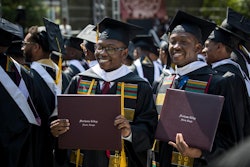Oklahoma’s Adams Legacy
For decades, like many southern states, Olahoma maintained a segregated higher education system that restricted Blacks to attending one public institution while Whites could attend several others. For undergraduate education, Langston University,was and still is Oklahoma’s only public historically Black institution.
State Rep. Opio Toure (D-Oklahoma City), who is a Langston University graduate, says the school during segregation offered no graduate and professional school programs. Rather than allow Blacks to attend either the Oklahoma State University or the University of Oklahoma, the state’s two major doctoral and professional degree-granting schools, the state government paid for Blacks to attend graduate and professional school in other states until the 1950s.
Even though Langston University has yet to acquire doctoral programs of its own, there’s a belief that federal intervention in Oklahoma resulting from the Adams case (see pg. 19) ultimately helped save Langston University from going under in the late 1970s. “There was a climate that supported closing the school,” says Dr. Melvin Todd, vice-chancellor for academic affairs emeritus for the Oklahoma State Regents for Higher Education.
Todd, who helped negotiate Oklahoma’s Adams plan, says new programs and a campus branch in Tulsa boosted sagging enrollments that had put the school in jeopardy during the 1970s. Langston University has a Baccalaureate II Carnegie classification and offers master’s degree programs.
Dr. Hans Brisch, chancellor of Oklahoma’s higher education system, says much of Oklahoma’s progress in higher education diversity is attributable to the impact of the Adams desegregation mandate.
“An intervention model had to be put in place to bring about real change in Oklahoma,” he says.
© Copyright 2005 by DiverseEducation.com

















